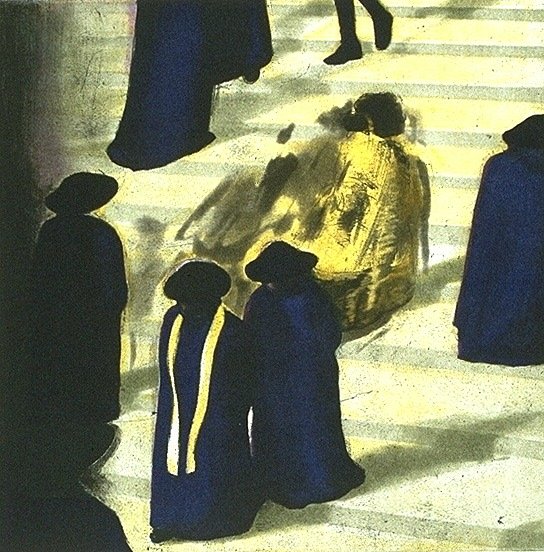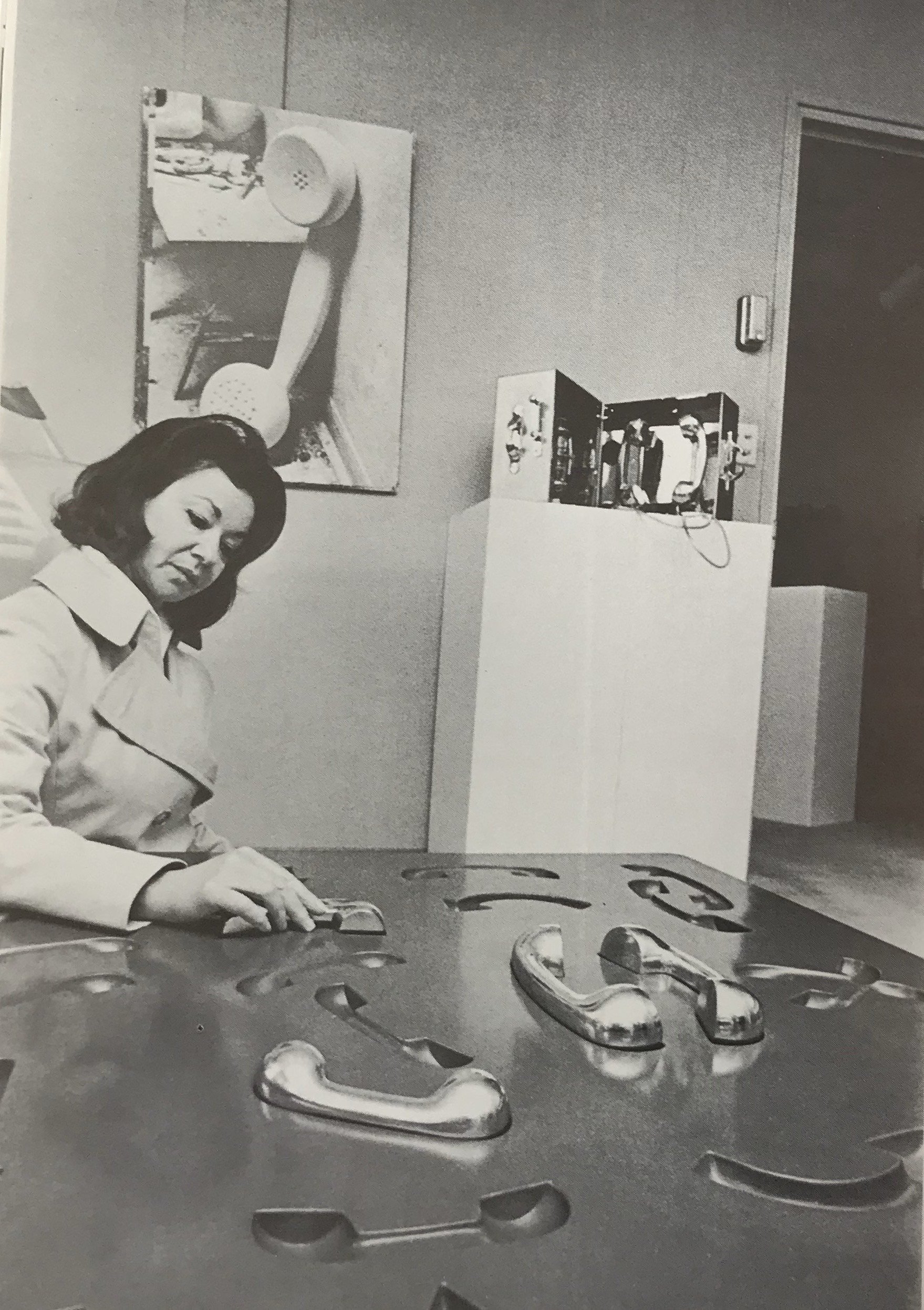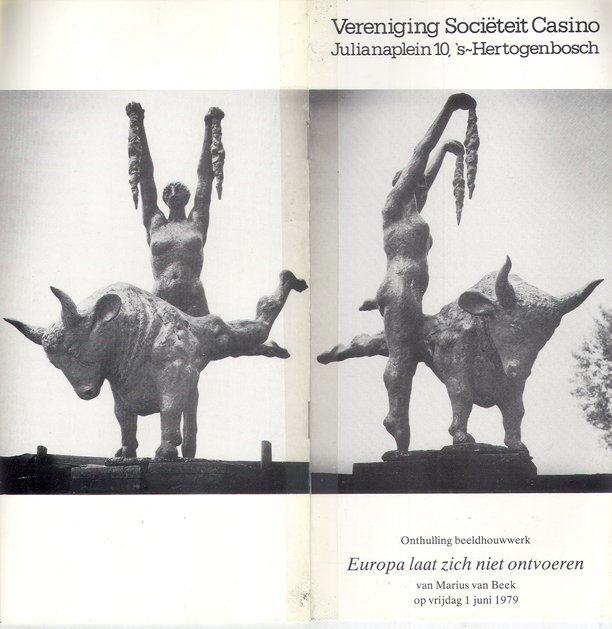Collecting Stories: ‘It’s My House!’
Founded with the principles of access and community, CURA Art utilises a broad network and expertise to support collectors with all aspects of managing their passion and investment.
Whilst many of the collectors we know and work with choose to remain private, several have generously allowed us to share their stories with you, to inspire others and encourage open discussion on the role of the collector in the 21st century. The aim of the Collecting Stories series is to de-mystify the world of collecting, but also represent the many different approaches to acquiring and patronising the arts.
As part of our exhibition “It’s My House!” at Porch Gallery, which celebrates the act of collecting, we spoke with several local collectors for this special Collecting Stories Feature!
Heather Stobo - co-owner of Porch Gallery
Who better to start this feature than one of the owners of Porch Gallery, Heather Stobo?
After moving to Ojai in 2009, Lisa Casoni and Heather Stobo saw the need to create an art space befitting to the town’s renowned creative spirit. In 2013, merging their backgrounds in the arts, they established Porch Gallery in its current historic building in downtown Ojai. Five years later, they purchased the storied establishment, and embarked on a restoration that now encompasses a creative live-work art gallery and gathering space.
Today, Casoni and Stobo create exhibitions representing emerging and established contemporary artists, while producing artistic events throughout the Ojai Valley.
Tell us about how you started collecting – what inspired it and what was the first piece – or was it an unconscious and evolving process?
I started collecting when I was 23 and working at Crown Point Press in San Francisco. The first piece I purchased was an etching by Christopher Brown. I bought that specific piece because it was the first body of work that was produced during my tenure at the gallery. In hindsight, I should have bought the Anish Kapoor that I was in love in with.
Image: Christopher Brown
What is your favorite work and why?
Many for various reasons:
Most sentimental: William T. Wiley etching given to me by Kathan Brown, founder of Crown Point Press
Sexiest: Mona Kuhn photograph
Most Heart Warming: Gary Lang work on paper given to Lisa by the artist when her parents passed away
Best investment: at this moment…..Sanford Biggers collage.
Image: Gary Lang
What piece has the most interesting story and why?
Barry McGee 40’ long scroll that that was part of his installation at Yerba Buena Center for the Arts in San Francisco. For the exhibition YBCA covered their gallery with rolls of parchment paper which Barry spray painted with his signature characters and objects. When the exhibition closed, the installation crew was allowed to take home parts of de-ensembled artwork. I had been carrying unframed roll around for over twenty years. As a treat to myself when we bought the gallery, I finally framed and hung it in our apartment.
If you could own any work of art or other precious object from any time (and irrespective of cost), what would it be?
The Anish Kapoor that I didn’t buy when I had the chance.
Frederick Fisher and Jennie Prebor
Architect Frederick Fisher designed the home for his family, a project lasting many years, and inspired by the hill-top villas surrounding Rome, but instead sitting a top the olive groves of Ojai. The result is a home with great personality, filled with treasures collected throughout their lives in the creative industries, and testament to their own creativity and nurturing of artistic talent.
Photograph: Tim Street-Porter
Tell us about how you started collecting – what inspired it and what was the first piece – or was it an unconscious and evolving process?
We’ve taken a multipronged approach to collecting. We’ve both always loved art and been close to it. I lived in the Venice art world for many years. Our approach has evolved mostly intuitively but familiarity with the artist is a key thread. My first real artworks were in trade from artist clients or bought from or simply gifts from artist friends: Elsa Rady, Roger Herman, Guy Dill, John Nava, Eric Orr, James Welling, Martin von Haselberg, Elyn Zimmerman, Julius Schulman, Lisa Adams, Ingrid Preston, Marvin Rand, Coy Howard, David Ireland, Robert Wilson, Lauren Bon, Roy McMakin, Stephen Harby, JoAnn Callis, Charles Garabedian, James Turrell, Peter Alexander.
Then there are the artworks by artists we like that show up at auction or charity sales: Richard Hamilton, Donald Judd, Billy Al Bengston, Ed Ruscha, Frank Gehry.
Or simply bought from a gallery: Ed Moses, Rosaline Delille, Beatrice Woods, Dennis Mukai, Ezra Stoller, Giorgio Morandi.
Image: Portraits of Frederick and Jennie by Guy Webster
What is your favorite work and why?
A small painting by my close friend Eric Orr, with whom I collaborated on an early loft project, entitled “Portrait of Fred”.
Image: ‘Portrait of Fred’, by Eric Orr
What piece has the most interesting story and why?
We helped John Nava get a commission for a tapestry for Princeton’s Firestone Library. John gave us a test weaving from the Belgian textile mill which hangs in our living room.
Image: ‘Firestone Library Tapestry’, by John Nava.
If you could own any work of art or other precious object from any time (and irrespective of cost), what would it be?
James Turrell’s ‘Roden Crater’
Image: ‘Draped Canvas’ by Marc Swanson
Senon Williams and Beth Ann Whittaker
Senon Williams is an artist and musician living and working in LA, alongside his partner, Beth Ann Whittaker. His work was included in ‘It’s My House!’.
Beth Ann is Associate Director of the Sam Francis Foundation, and founder of Plain Sight Archive. Together, their collection reflects both their creative spirit and their desire to learn about and support artists from the past and present.
Tell us about how you started collecting – what inspired it and what was the first piece – or was it an unconscious and evolving process?
We started collecting separately. But both of us came to it through relationships with artists. Many pieces in our collection were acquired through very personal connections with the creators. We hope to help build community through collecting.
Another way we enjoy collecting is through research and interest in the artists and their histories. We also collect works that we are drawn to because of their spirit and soul.
What is your favorite work and why?
Beth Ann: First of all this is a really hard question!! My favorite piece we have is by the artist Ruth Francken. A red resin and chrome table with metal phone sculptures from 1964. So many reasons why... the piece itself to me speaks to connections and communication, to and idea of a "future technology" that we are living through now. I also love this work because she was an artist in the 20th century that has not had much attention paid to her powerful scope of work. That resonates with my passions of historical erasure and recovery. The piece had previously been in a home of another California artist and I love the continued story how an artwork builds, lives and carries through generations.
Image: Ruth Francken, "Tranquilizer Table", 1967, chrome and resin.
Senon: My favorite work of art is a mosaic self portrait my mother made in Highschool as a school project. She never allowed her artistic self to flourish though, at such a young age her talent was incredible. I feel a responsibility to carry on what should have been for my mother. I have a need to create inside of me but this painting reminds me it is imperative.
Image: Barbara Breiter mosaic from the early 1960’s
What piece has the most interesting story and why?
Senon acquired this intricate ink on paper drawing in the ‘90s and the artist was unknown. It had a scribble scrabble signature at the bottom but illegible with the year 1960 written next to it. 25 years later, we figured out who actually created the work. Gregory Masurovsky and Beth Ann was fortunate to meet with his son. He was married to painter Shirley Goldfarb. They lived in Paris from the early 1950s.
Image: Gregory Masurovsky, Ink on paper, 1960
If you could own any work of art or other precious object from any time (and irrespective of cost), what would it be?
Senon: I’d probably own a painting by Ed Ruscha. He’s made a bunch of works with colloquialisms in them. I can hear his voice and laughing about it, twisting the words to create some new absurd meaning. He is also largely responsible for how far I have come as an artist.
Beth Ann: Gosh, another really hard question. This actually changes every day! Today I would love to acquire a work by the artist and activist Dr. Samella Lewis. She is a powerhouse of an artist, but also a symbol of how community building and championing of artists better the entire world.
Marc Winnikoff - Architect and collector
Tell us about how you started collecting – what inspired it and what was the first piece – or was it an unconscious and evolving process?
Collecting was sort of accidental. I did not set out to become a collector. I was drawn to different mediums, styles and periods. For me art is meant to delight, enlighten, and transport. It does not mean that all art is always “happy”, rather it evokes and heightens our human experience. I greatly enjoy having images and objects around me that challenge me. I also take comfort in becoming familiar with them in my quotidian experience as I move through my day be it at my home, my office or wherever an artistic experience finds me.
What is your favorite work and why?
My favorite piece in my home is a maquette of a bronze sculpture, Europa laat zich niet ontvoeren (“Europa will not be kidnapped”) by the Dutch artist, Marius van Beek (see photo). He produced the work in 1979 and it was installed in the center of the town s’Hertrogenbosch (Hieronymus Bosch’s home town). My cousin in Holland has another maquette in his living room which was given to him by a senior Dutch jurisprudent. Whenever I visited him I greatly admired the maquette and eventually found a gallery in Holland that was able to locate another one (there were only four produced).
What drew me to the piece is that van Beek challenges the archetypal myth of the encounter between Europa and Zeus, whereby Zeus in the form of the Minotaur kidnaps Europa and disappears in the sea with her hanging onto his back. van Beek depicts Europa luring Zeus, leading him away from her and underneath the potentially threatening banderillos. Europa is showing she is the master of the situation, a torera who has mastered the ultimate male authority. The original myth is supplanted by Europa’s triumph against a long-accepted outcome canonized in classic mythology.
If you could own any work of art or other precious object from any time (and irrespective of cost), what would it be?
This is a great question. If I could, would I have ‘Mona Lisa’ over my mantle? ‘Water Lillies’ in my den? Such dreamy narratives are so disconnected from reality I cannot begin to ponder them. These great works belong in museums that can be enjoyed in a place of space and light. Owning such a piece would likely obscure the beauty and enjoyment of such monumental works.
In a slight departure from your question, “If I could experience any work of art, what would it be?” I would choose to be present at Yves Klein’s Monotone Symphony on March 9, 1960, at Galerie International d'Art Contemporain in Paris. Klein’s wit and audacity of spirit took the audience by surprise and created a seminal milestone in modern art and opened up a vast frontier. To be in the presence of this experience would have been truly extraordinary. Read an interview with one of the painted models: https://www.bbc.com/news/entertainment-arts-37632356.
















